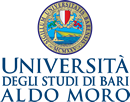La fruizione degli ambienti di apprendimento nella didattica dell’italiano L2
DOI:
https://doi.org/10.15162/1970-1861/1327Parole chiave:
Digital learning environments, Technology-mediated Language learning, Italian as L2, Usability, Learning AnalyticsAbstract
“The question of where people learn languages is equally as important as that of how they do so” (Benson, 2021). The paper explores the digital “where”, considering learning spaces for SLA. The literature offers a great deal of research about online learning but only a little on digital linguistic settings in interaction with learners. Students move within the spaces, they choose and select material, they construct their own path and knowledge. From the ecology of learning perspective, learning happens through the interaction with the environment (van Lier, 2004). Better understanding of that can help the teachers to comprehend the way students live and experience the learning platform.
The study employed mixed methods which include qualitative and quantitative designs to have a more complete view of the problem. The data were collected through the observation of Italian as L2 students of the University G. D’Annunzio in classroom and within two different linguistic virtual contexts, an LMS[1]Moodle-based and a CMS[2] WordPress-based where digital resources for Italian as L2 were implemented. Thanks to the data analysis, it was possible to cast light on the construction of their own learning space and gave relevant suggestion about students’ behaviour.
[1]Il Learning Management System è un software dedicato all’amministrazione, la documentazione, il tracciamento, i report e l’erogazione di corsi di formazione, corsi e interventi didattici.
[2]Il Content Management System è un software per la gestione, la creazione e la modifica di contenuti digitali. Alcuni esempi sono Wikipedia, le piattaforme per i blog o siti internet.
Riferimenti bibliografici
Benson P., 2021, Language Learning Environments: Spatial Perspectives on SLA, Bristol, Multilingual matters.
Braun V., Clarke V., Hayfield N., & Terry G., 2006, “Thematic analysis”, in Liamputtong P. (ed.), Handbook of research methods in health social sciences, Springer, pp. 843–860.
Damşa C., Nerland M. and Andreadakis Z.E., 2019, “An ecological perspective on learner-constructed learning spaces”, in Br J Educ Technol, 50, pp. 2075-2089. Url: https://doi.org/10.1111/bjet.12855 (ultimo accesso: 14/09/2021).
Debski R., 2003, “Analysis of research in CALL (1980-2000) with a reflection on CALL as an academic discipline”, in ReCALL, 15(2), pp. 177-188.
Dreyfuss H., 1955, Designing for People, New York, Simon & Schuster.
Ellis R.A. and Goodyear P., 2016, “Models of learning space: integrating research on space, place and learning in higher education”, in Rev Educ, 4, pp. 149-191. Url: https://doi.org/10.1002/rev3.3056 (ultimo accesso 14/09/2021).
Fallani G., 2017, “Il Web come piattaforma. L’e-learning oltre i recinti tecnologici”, in InSegno. Italiano L2 in classe, Siena, Becarelli Editore, pp. 1-2.
Fallani G., 2020, “Oltre le piattaforme didattiche. E-learning 2.0 e apprendimento nell’open web”, in Villarini, A. (a cura di), Insegnare italiano con i MOOC, Pisa, Pacini editore, pp. 137-162.
Fenwick T., Edwards R. & Sawchuk P., 2011, Emerging approaches to educational research: Tracing the sociomaterial, Abingdon, Routledge.
La Grassa M., 2020, “E-learning e massive learning nella didattica dell’italiano L2: metodologie a confronto”, in Villarini A. (a cura di) Insegnare l’italiano con i MOOC, Pisa, Pacini Editore, pp. 37-59.
Limone P., 2021, Ambienti di apprendimento e progettazione didattica. Proposte per un sistema educativo transmediale, Roma, Carocci.
Maugeri G., 2017, La progettazione degli ambienti didattici per l’apprendimento delle lingue straniere, Venezia, Edizioni Ca’ Foscari.
Ministero degli Affari Esteri e della Cooperazione Internazionale, 2018, L’italiano nel mondo che cambia – 2018.
Nielsen J., 1994, Usability Engineering, Morgan Kaufmann.
Troncarelli D, 2016, “Nuovi e vecchi paradigmi nell’insegnamento delle lingue e culture straniere in Rete”, in La Grassa M., Troncarelli D. (a cura di) Orientarsi in rete. Didattica delle lingue e tecnologie digitali, Siena, Becarelli, pp. 46-65.
Viberg O., Hatakka M., Bälter O. & Mavroudi A., 2018, “The current landscape of learning analytics in higher education”, in Computers in Human Behavior, 89, pp. 98-110.
Viberg O., Grönlund Å., 2021, “Desperately seeking the impact of learning analytics in education at scale: Marrying data analysis with teaching and learning”, Url: https://arxiv.org/abs/2105.06680 (pubblicato online il 14/05/2021, ultimo accesso il 14/09/2021).
Villarini A., 2021, Didattica delle lingue straniere, Bologna, Il Mulino.





